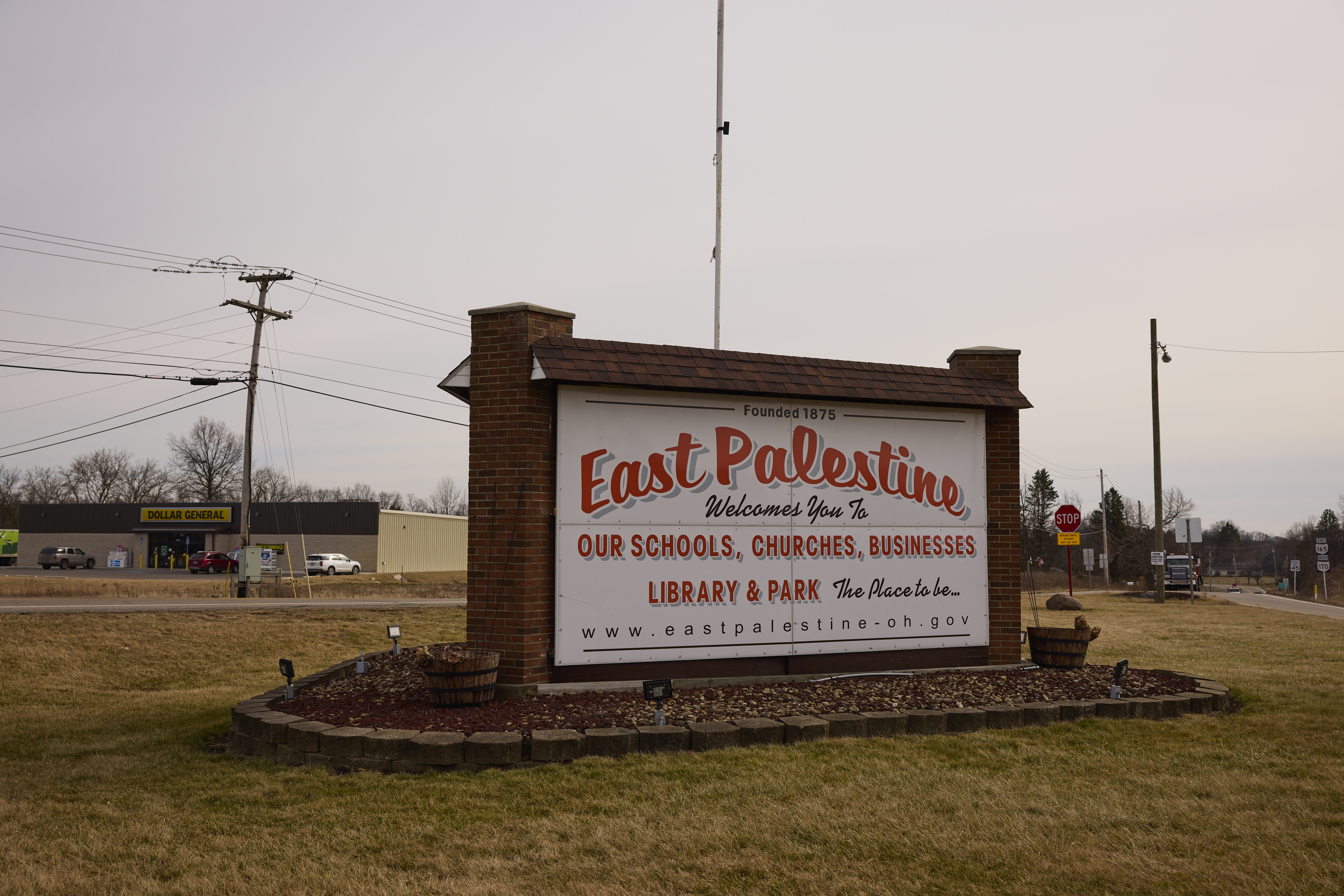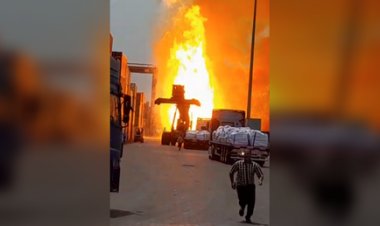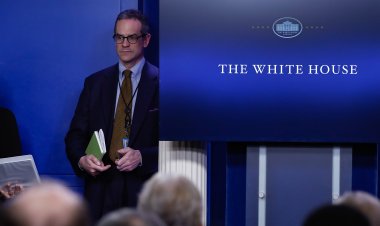Federal accident investigators went to East Palestine this week. Here are 5 things we learned.
The National Transportation Safety Board spent two days on a fact-finding mission into the Feb. 3 derailment.


EAST PALESTINE, Ohio — Federal accident investigators spent two days this week poring over the February train derailment that fouled the air, soil and water of this eastern Ohio community and fueled political headaches for the Biden administration.
Nobody died or was injured in the Feb. 3 accident, and freight train derailments are hardly a novel occurrence — roughly 1,000 happen in the U.S. in a typical year. But this one has drawn outsized attention from elected leaders and national news media, and the crash has provoked scrutiny of a range of often-buried issues, from the rail industry’s safety practices to regulations on toxic chemicals.
The National Transportation Safety Board, an independent agency that investigates accidents, isn’t expected to issue a formal report on what caused the derailment until next year. For now, here are five major revelations that came out of the NTSB’s 20 hours of public sessions here, which ended Friday:
1. Biden is still paying a political price
East Palestine wasn’t a haven of liberalism before the Norfolk Southern train derailed — just 29 percent in the city voted for President Joe Biden in 2020 — but ire toward Democrats, and specifically Biden, has only hardened since.
Residents have complained that the federal government has done too little, too late, to make them whole after the toxic mess. They have reserved particular anger for Biden, who has said he would visit the community but has yet to do so.
The fact that federal agencies including the Department of Transportation and Environmental Protection Agency sent people to the site within hours of the derailment hasn’t quelled the criticism. Nor did a Feb. 23 visit by Transportation Secretary Pete Buttigieg or frequent trips to East Palestine by EPA Administrator Michael Regan.
“If Biden doesn’t want to take action, he should have to come down here and look us in the eyes and tell us why our lives aren’t worth him coming down here and helping us,” resident Jami Wallace said in an interview after a public meeting NTSB held Wednesday.
Resident Christina Reed also blamed Biden for his absence, and was particularly upset that he didn’t mention her town in his State of the Union address on Feb. 7 — four days after the derailment, with evacuation orders still in place.
“To me, that’s just ridiculous — and that says a lot,” Reed said.
2. The burning of noxious chemicals might not have been necessary
One early response to the derailment helped turn it into a viral media and social media phenomenon: a decision by first responders, railroad officials and hazardous materials experts on Feb. 6 to release the toxic chemicals from some of the toppled train cars into the air.
By venting the vinyl chloride and burning it off, they hoped to avoid a catastrophic explosion that they feared would have sent shrapnel knifing into the surrounding area. But the resulting black plume created indelible images on TV, fueled conspiracy theories and produced one local news headline alleging that officials had “basically nuked a town” — a phrase that soon found its way into a congressional letter to DOT.
And based on this week’s NTSB hearing, it all might have been unnecessary.
According to data and witness testimony presented to the board, the feared chemical reaction inside the rail cars probably wasn’t happening.
The incident commanders say they made the best decision they could with the information they had, under difficult conditions. They noted that the people on the scene had just minutes to decide and no way to fill in their incomplete information.
Many residents said they believe the burning of the chemicals created many of the health problems they’re still experiencing, such as rashes, nosebleeds and eye irritations, and they worry about more profound impacts down the road. The decision has also seeded enormous distrust of the federal government, especially on the EPA’s assurances that their air and water are safe.
3 First responders didn’t know what was in the train cars for hours.
Federal regulations say railroads must maintain information about what’s in every train car, and must provide that information to firefighters, police officers and EMTs when a problem arises.
But in East Palestine, the systems meant to ensure that happens broke down.
The freight rail industry maintains a phone app called AskRail that officials can use to get information — but many don’t use it or even know it exists.
The first local official to receive information about the derailed train’s contents got it more than an hour after the train derailed at 8:54 p.m. Others, including the incident commander, didn’t get it until almost 2:30 a.m., when he happened upon a list sitting on a desk.
Norfolk Southern had provided the information to its own contractors at 9:08 p.m., NTSB Chair Jennifer Homendy said during the hearing. (Norfolk Southern argues that the document she was citing reflected Central time, which would have been 10:08 p.m. in East Palestine.)
“We don’t have evidence to that fact,” Homendy said when asked after the hearing about the time discrepancy. She went on to say that “it may not make a difference” because “what matters is that [first responders] get it right away, and in this case, they didn’t.”
Railcars are also required to have placards with codes corresponding to the chemicals they contain. But investigators say some placards burned in the fire. Federal regulations specify that the placards must stand up to weather exposure, not fire or extreme heat — and this could be an area ripe for regulation.
4. Rail workers say cost-cutting has curtailed inspections.
Railroad workers and their unions say freight railroads have increasingly promoted cursory inspections by locomotive crews, instead of the vastly more complete inspections done by highly trained workers known as “carmen.”
Federal regulations require that if no carman is available to do a complete inspection, at minimum a 12-point inspection must be done by the train’s crew. But rail union officials interviewed by NTSB suggested that the railroads have taken steps to ensure that fewer carmen are available — including decreasing the number of carmen and shutting down the inspection stations they typically staff.
Trains can also be kept outside of a railyard, in which case a full inspection is not required. Transportation Communications Union national representative Jason Cox said during the hearing “that can be used to skate the regulation.”
He also noted that the 12-point inspections done by locomotive crews are “just supposed to be a stopgap to get the freight car to an inspection point,” but that “unfortunately in today’s rail structure… [that] has become more and more the primary inspection on these cars.”
And in the case of the train that derailed in East Palestine, it hadn’t been inspected after being transferred from another railroad two days before the derailment.
NTSB has previously pointed to an overheating wheel bearing as the cause of the fire and derailment. Railroads have argued that in the case of faulty wheel bearings, detector technology along the tracks is better than human inspectors, who can’t see inside the wheel.
5. Industry, not regulations, makes many important decisions on railroads.
The freight rail industry decides many aspects of its operations through consensus achieved via its powerful trade group, the Association of American Railroads.
And often, individual railroads make their own rules. This includes, for instance, the trackside technology that can detect equipment problems on trains as they pass by, including the overheating wheels believed to have caused the derailment. The railroads decide how far apart those detectors sit, at what temperature an alert will sound, and how often they’re maintained.
At the hearing, NTSB Vice Chair Bruce Landsberg said he wasn’t comfortable with the idea that an industry essentially regulates itself, an arrangement he said was “unique in the transportation world.”
Inspections are one area the NTSB is probing for potential recommendations. Though the independent board has no power to issue regulations, it can make recommendations to lawmakers and regulators — and those recommendations have significant weight. Homendy, the chair, said that about 80 percent of the board’s recommendations are voluntarily adopted.
During the hearing, Homendy asked a union official if regulations need to change so railroads can’t substitute a cursory inspection for a more thorough one.
The board is also examining the circumstances in which a train can be considered highly flammable, exposing it to more stringent regulations. The train in East Palestine did not meet the existing definition, even though the vinyl chloride it was carrying is dangerous and toxic.
Landsberg suggested he would support broadening the definition. “Five cars basically cleaned out a significant portion of East Palestine, and I think regulations are not covering this in an adequate sense,” Landsberg said.
AAR Senior Vice President Mike Rush responded to Landsberg’s call for regulation by saying that “railroads are the original heavily regulated industry.”
Discover more Science and Technology news updates in TROIB Sci-Tech












